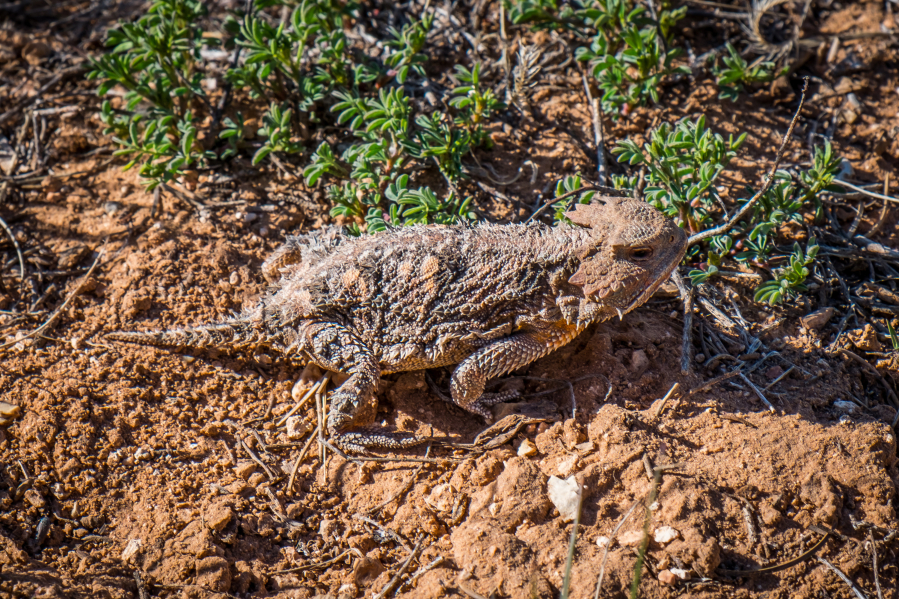The next time you’re enjoying Montana’s great outdoors, be on the lookout for peculiar creatures with a bizarre defense mechanism — shooting blood out of their eyes.
State wildlife officials want to gather more data on the rarely seen greater short-horned lizard, commonly known as the “horny toad,” Montana Department of Fish, Wildlife and Parks said in an Oct. 2 news release.
And you could help them do just that.
These lizards were once so common in Montana they were considered the second most abundant reptile along the Missouri River. In the late 19th century, they were only second to the western rattlesnake, officials said.
But nowadays they’re considered a “species of greatest inventory need” due to lacking data on their population and distribution, officials said.
Wildlife biologists have a tough time tracking them down because their “elusive nature and cryptic coloration” makes them camouflage experts, officials said.
“This is where we can use outdoor recreationists’ help, because oftentimes people just accidentally come across one,” biologist Nicole Hussey said in the release.
A bloody defense mechanism
But first, if you run into one, remember they can shoot pressurized blood out of their eyes, often to defend against “canid and felid” (canine and feline) predators.
The National Park Service posted about the unusual behavior on Instagram back in May.
“Felt cute, might shoot blood out of eyes later …” officials joked in the May 16 post. “When they feel threatened, its final defense response is to shoot blood out of its eye sockets. As a result, the predator is often frightened and flees.”
Shooting blood from their eyes also helps these critters remove foreign particles from the surface of its eyes, according to the Instagram post.
“The blood has a repulsive taste that comes from consuming venomous harvester ants,” officials said in the news release. “Although they seem like they would make a good pet, please leave these fascinating critters where you find them.”
Habitat, tips for spotting
Greater short-horned lizards are scattered throughout Montana’s eastern range, often found hanging out on south or east-facing slopes of coulees, ridge tops, and sometimes open flats.
Their preferred habitats have sagebrush, creeping juniper, or rabbitbrush, with spare bunch grass, patches of bare ground and shale-like soil. Sometimes they’re found in some ponderosa pine sands.
Because they are masters of disguise, the sneaky lizards are typically easiest to spot when they move, officials said.
Some other tips to keep in mind are:
- Adults are diurnal, so they’re most active during warmer daylight hours.
- Their coloration blends in with the soil (called cryptic coloration), which can vary by location.
- Look out for the features that distinguish them from three other lizard species that are more regularly documented in Montana. Horny toads have a broad, flattened body, and share the range with the common sagebrush lizard, which is much more slender.
- Horny toad heads have a “heart-shaped” appearance from above.



